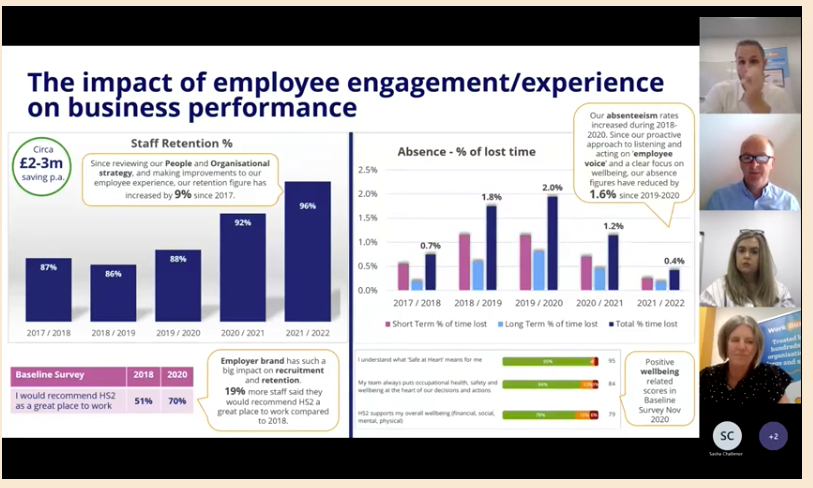Staff wellbeing has never been a more popular topic of conversation. The Covid-19 pandemic pushed many of us into an involuntary period of self-reflection and left countless employees assessing whether they were in fact happy in their places of work, leading to a decline in staff engagement as a result.
The ‘new normal’ of home working was – and still is – a challenge for both employers and employees alike. Employers battled with the technical issues of setting up their staff at home and worried about their productivity, and many employees were left feeling overwhelmed from juggling the likes of work and childcare or feeling isolated because they were alone in their new working environments.
At the other end of the spectrum, frontline workers were left feeling frustrated as they risked exposure to the virus and were asked to work overtime to atone for those having to self-isolate. While many office-based employees benefitted from improved flexibility whilst working from home, frontline workers saw the sharpest fall in engagement levels during the pandemic, as reported in our 2021 State of Employee Engagement report.
With the working world going through such testing times, it’s unsurprising that the attitudes and feelings of workers have changed to reflect this. We’re now in a period called ‘The Great Resignation’ where almost one in four UK workers are planning to change jobs in the next few months. With such news hitting the headlines, following on from the stresses caused by the pandemic, employers are now starting to realise just how crucial it is to know whether their employees are happy in their roles or are considering moving on.
Low staff retention rates and high employee turnover can be very problematic for companies – replacing just one employee can cost up to £25,000 reported The Guardian – but what arguably hurts companies the most is not paying attention to staff engagement levels. It is estimated that disengaged employees are costing the UK economy £340bn every year in lost training, sick days, productivity, creativity and innovation.
The UK looks to be facing a disengagement crisis since the emergence of Covid-19 where some employees are lacking passion, enthusiasm, and have no or very little emotional commitment to the company they work in. It’s fair to say that employees who lack motivation will not be as productive as those who feel engaged and are less likely to go above and beyond to contribute to common business objectives. Disengaged employees are less likely to be brand advocates, more likely to take time off work, and tend to lack the desire to collaborate with their colleagues. This behaviour can create a bad working environment and can be damaging to team morale at the very least.
Worse yet, staff who are disengaged are four times more likely to leave their jobs, so it’s unsurprising that the number one priority right now for HR is ‘Improving employee engagement and the overall employee experience’, as revealed in our State of Employee Engagement report.
To put a monetary value on this, in a recent webinar on reinventing the employee experience, Neil Hayward, Chief People Officer at HS2, estimated that since reviewing their people and organizational strategy back in 2017, and making improvements to their employee experience, HS2’s staff retention figure has increased by 9%. This translates to a £2-3m saving per annum!
